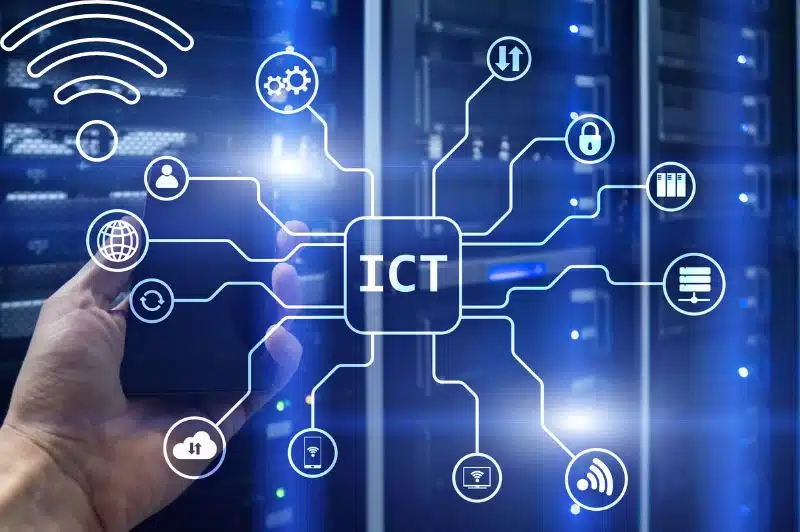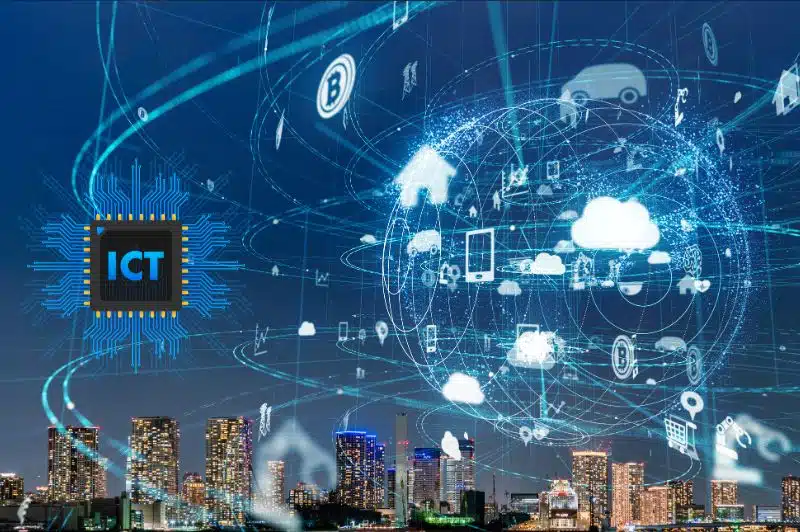You’re likely familiar with the terms “information technology” and “communications technology,” but what exactly does ICT stand for, and how does it impact your daily life? ICT, or information and communications technology, refers to the entire infrastructure and components that enable modern computing, data sharing, and global connectivity.
It’s a broad term that encompasses all devices, networking components, and applications that help people and organizations interact in the digital world. From the internet and mobile networks to artificial intelligence and robotics, ICT is constantly evolving and shaping the way you create, process, and share information with others.
Defining ICT
Before we probe the world of ICT, it’s necessary to understand what it means. ICT, or information and communications technology (or technologies), is the infrastructure and components that enable modern computing.
The Evolving Nature of ICT
To grasp the concept of ICT, you need to recognize that it’s not a static entity. The technologies, devices, and even ideas related to ICT are constantly evolving, making it challenging to pin down a single, universal definition.
Key Components of ICT
Evolving alongside the concept of ICT are its key components, which include devices, software, middleware, data, wired and wireless networks, communication technologies, the cloud, communications protocols and interfaces, and information security and governance policies.
With these components, ICT enables the creation, processing, and sharing of data or information between humans and organizations. It’s not just about the individual components, but how they interact and come together to facilitate global connectivity and communication.

ICT vs. IT
The distinction between ICT and IT is often blurred, but it’s important to understand the differences between these two terms.
The Distinction Between ICT and IT
On the surface, ICT and IT seem interchangeable, but they have distinct meanings. ICT encompasses a broader range of technologies, including telecommunications, internet, and digital media, whereas IT focuses primarily on managing information and its technical aspects, such as software, hardware, and networking.
IT as a Subset of ICT
An important distinction to make is that IT is a subset of ICT. IT deals with the management of information and its related technologies, whereas ICT includes a wider range of technologies that enable communication, data sharing, and global connectivity.
It’s worth noting that while IT is concerned with the technical aspects of information management, ICT takes a more holistic approach, considering the social, economic, and cultural implications of these technologies. This broader perspective is what sets ICT apart from IT, making it a more comprehensive term that encompasses the complexities of modern computing and communication.
Components of ICT
While the concept of ICT is broad and encompasses various aspects, it can be broken down into several key components. These components work together to enable modern computing and facilitate the creation, processing, and sharing of information.
ICT components include devices and hardware, software and middleware, data and networks, communication technologies and protocols, and information security and governance policies.
Devices and Hardware
With the proliferation of technology, devices and hardware have become an integral part of our daily lives. From smartphones and laptops to servers and mainframes, these devices enable us to interact with the digital world.
Software and Middleware
An array of software applications and middleware solutions enable devices to communicate with each other and facilitate the exchange of information. These include operating systems, productivity software, and specialized applications that cater to specific needs.
Software plays a crucial role in ICT, as it enables devices to perform specific tasks and interact with users. From web browsers and email clients to mobile apps and games, software has become an vital component of modern computing.
Data and Networks
Devices connected to networks enable the sharing and exchange of data. These networks can be wired or wireless, and they facilitate communication between devices and systems.
Plus, the internet has enabled global connectivity, allowing users to access and share information on a massive scale. This has led to the creation of vast amounts of data, which can be harnessed to gain insights and drive decision-making.
Communication Technologies and Protocols
To facilitate communication between devices and systems, various technologies and protocols have been developed. These include Wi-Fi, Bluetooth, and 5G, among others.
Communication technologies and protocols enable devices to communicate with each other, facilitating the exchange of information and enabling global connectivity.
Information Security and Governance
To ensure the secure exchange of information, ICT components must be governed by policies and protocols that protect against unauthorized access and data breaches.
To safeguard sensitive information, organizations must implement robust security measures, including firewalls, encryption, and access controls. This ensures that data remains confidential and is only accessible to authorized personnel.
For instance, implementing strong passwords and multi-factor authentication can help prevent unauthorized access to systems and data. Similarly, regular software updates and patch management can help prevent vulnerabilities from being exploited.
The Importance and Challenges of ICT
Your understanding of ICT would be incomplete without considering its importance and challenges. According to Information and Communication Technology (ICT), it has revolutionized the way we live, work, and communicate.
Benefits for Businesses
Advantages abound for businesses that leverage ICT. With automated business processes, they can cut costs and increase efficiency. The big data revolution enabled by ICT provides valuable insights, driving innovation and growth. Moreover, ICT-enabled transactions like internet shopping and telemedicine offer customers more choices, enhancing their overall experience.
Challenges and Problems Created by ICT
Advantages notwithstanding, ICT also presents challenges and problems. The digitization of data and expanding internet use have created opportunities for cybercrime, disrupting systems and stealing sensitive information. Moreover, automation technologies and robots sometimes displace workers, exacerbating social issues like isolation and loneliness.
A closer look at the challenges reveals that ICT has also created new avenues for crime, allowing bad actors to gain unauthorized access to systems and steal valuable data. Furthermore, the digital age has led to a decline in face-to-face interactions, contributing to social issues like trolling, cyberbullying, and depression. As ICT continues to shape our world, it’s vital to acknowledge and address these challenges to ensure its benefits are equitably distributed.
Conclusion
Taking this into account, you now have a deeper understanding of ICT and its far-reaching implications on your daily life, business, and society as a whole. As you navigate the digital age, remember that ICT is not just a collection of technologies, but a powerful tool that can bring about immense benefits or unintended consequences, depending on how it’s utilized. By being aware of its capabilities and limitations, you can harness the power of ICT to improve your life, work, and interactions, while also being mindful of its potential pitfalls and working towards a more inclusive digital future.




